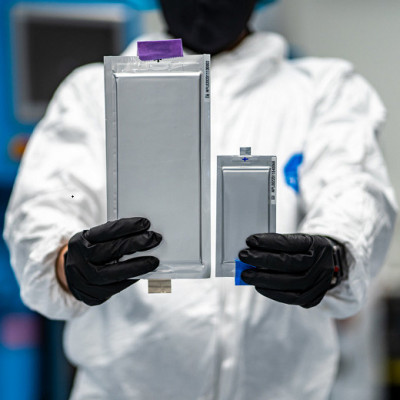
2021-08-27
Visited : 1133
POSTECH joint research team succeeds in improving ionic conductivity using electrostatic interface of polymer electrolytes.
As the demand for electric vehicles rises, interest grows for all-solid-state batteries, which are next-generation batteries that will replace lithium-ion batteries – that are inherently dangerous due to their explosive nature. However, the low ionic conductivity of solid-state polymer electrolytes or low chemical stability of solid-state sulfide electrolytes is hindering the popularization of electric vehicles. To this, a POSTECH research team has recently developed a polymer electrolyte without a “dead zone” – which lowers ion transport – accelerating the commercialization of all-solid-state batteries.
A research team led by Professor Moon Jeong Park and Ph.D. candidate Jaemin Min of POSTECH’s Department of Chemistry with Professor Chang Yun Son’s research team from the Division of Advanced Materials Science have developed a novel block copolymer electrolyte that can control the structure through electrostatic interactions. This research is attracting attention as it fundamentally solves the issue of lowered mobility of ions in the dead zone that inevitably exists in conventional two-dimensional morphologies. The findings from this research were published in the Proceedings of the National Academy of Sciences of the United States of America (PNAS), an authoritative journal in the field of energy and chemistry.
Most of the energy storage devices still use lithium-ion batteries. In a lithium-ion battery, ions are moved by a liquid electrolyte. Even a small damage can leak into the electrolyte leading to a fire or explosion, and thus considered unstable. In order to overcome this disadvantage, an all-solid-state battery uses a solid-state electrolyte. In particular, due to the flexible nature of the polymer, the polyelectrolyte-based all-solid-state battery is stable even in a collision and has a low risk of fire since it is not flammable. In addition, compared to lithium-ion batteries of the same weight and size, the energy density is 1.5 to 1.7 times higher so it lasts longer.
Unlike lithium-ion batteries, all-solid-state batteries consist of only an electrode and an electrolyte without a separator between the negative electrode and the positive electrode. The research team developed a new nanostructured electrolyte by controlling the electrostatic interaction in the polymer electrolyte. The team synthesized a set of polymer electrolytes with different strengths of electrostatic interactions through sophisticated synthesis methods, and confirmed the nanostructures of these electrolytes by small-angle X-ray scattering (SAXS) profiles.
Further, the researchers assessed the distribution of ions within the nanostructures using extensive molecular dynamics simulations for the first time in Korea. Through the simulations, the researchers identified the charge distribution at several angstroms (Å)*1 and verified that it was a key to develop unprecedented three-dimensional low symmetry morphology.
This study is unique in that the low symmetry morphology has commonly been observed in bimetallic compound materials, but unprecedented for the case of polymer electrolytes, and is significant in that it systematically identified the cause of the formation of these nanostructures through experiments and theoretical calculations. In addition, this is the first study that suggests a method for fabricating a solid electrolyte having a conductivity 10 times higher than that of a two-dimensional morphology by controlling the charge distribution at the Å unit level in a polymer electrolyte.
In particular, the research collaboration between Professor Moon Jeong Park who maintains a world-leading group in polymer electrolytes synthesis and Professor Chang Yun Son, an expert in computer simulations, has created great synergy.
“The new nanostructure enables a significant enhancement in ionic conductivity compared to the typical two-dimensional structures that have been previously reported,” explained Professor Moon Jeong Park who led the study. “This provides a potential route to accelerating the commercialization of all-solid-state batteries and developing safe batteries.”
This study was conducted with the support from the Mid-Career Researcher Program, the Creative Materials Discovery Program, Science Research Center Program, and the Young Researcher Program of the National Research Foundation of Korea.
Read the original article on Pohang University of Science and Technology (POSTECH).